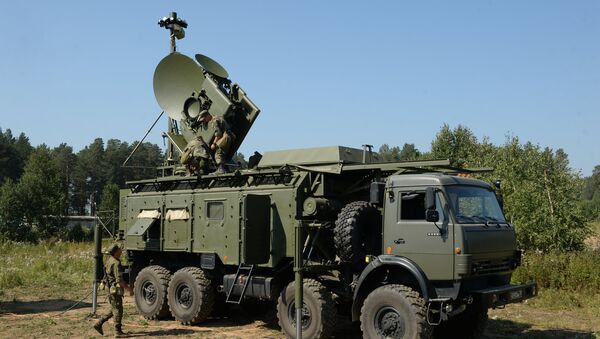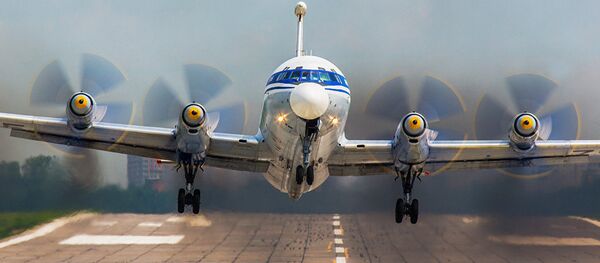During the war games Russia conducted earlier this week, Krasuha-4 operators managed "to blind" the navigation systems and means of targeting high-precision weapons used by Russian Su-34 fighter-bombers, which played the role of enemy aircraft during the drills.
As a result, the "enemy" was unable to detect mock-up targets and launch an airstrike on them.
Deceiving a Missile
In May, Vladimir Mikheev, spokesman for Russia's Radio-Electronic Technologies Concern (KRET), said that the production of military equipment related to Russian electronic warfare systems will be increased by about 30 percent in the near future.
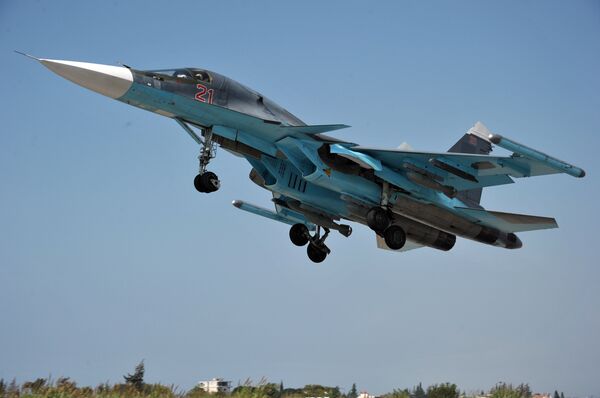
KRET plants have manufactured a wide array of advanced electronic warfare systems, including the Krasuha-S4, Rtut-BM, Rychag-AV, Vitebsk and Khibiny-M individual defense systems.
Speaking at the MAKS-2017 air show in the Moscow Region in August, Mikheev specifically cited a total of 100 Su-34 fighter-bombers that are currently in service with the Russian Aerospace Forces. According to him, all of them are equipped with the Khibiny-10V systems.
The Khibiny is a small torpedo-shaped container which is mounted on the wingtips of aircraft and increases the survival rate of the planes by 25-30 percent.
#Su_34 Equipped with #Khibiny electronic warfare / Jamming System
— Dz القدرات العسكرية (@Skandarov40) 5 июля 2016 г.
Credit to #جيش_الامبراطورية pic.twitter.com/vDW1Hsx46v
The Khibiny provides protection to individual aircraft, making it difficult for an enemy to detect and down the plane using air-to-air and ground-to-air missiles, according to RIA Novosti expert Andrey Kots.
Notably, these systems were installed on Russia's Su-34 fighter-bombers and Su-30SM fighter jets, which launched airstrikes on Daesh terrorists in Syria.
Russian Su-34 with 5 Kh-31 missiles and "Khibiny" electronic warfare system [OS][1400 × 946] — #army #military pic.twitter.com/JDsNziyJCG
— Army Complex (@ArmyComplex) 25 июня 2017 г.
As for Russian helicopters, they are equipped with the Vitebsk electronic warfare system, which has Khibiny-like characteristics. In particular, the Vitebsk is installed on Ka-52 attack helicopters and Mi-8MT multi-purpose helicopters.
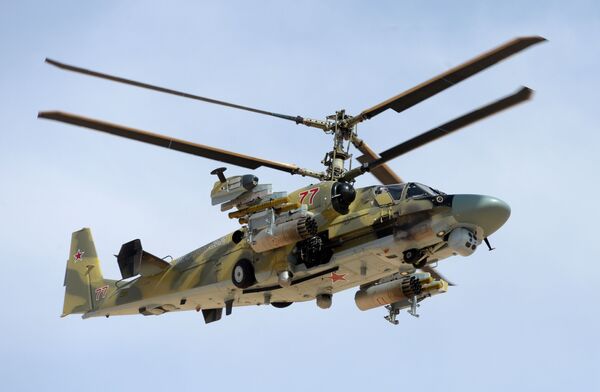
Additionally, Kots mentioned the sophisticated Tarantul (Tarantula) aircraft electronic countermeasures system, which is capable of helping a Su-34 effectively protect other combat aircraft in its squadron from enemy radar.
The system has been developed since 2007 and is now reportedly undergoing state tests, according to Kots, who touted the Tarantul as the future of Russian electronic warfare systems.
Asymmetric Response
The most well-known Russian electronic warfare system is the broadband multifunctional jamming station Krasukha-4, which is built onto a BAZ-6910-022 four-axle-chassis.
The system has a range of 300 kilometers and is designed to counter airborne early warning and control systems and other airborne radar arrays.
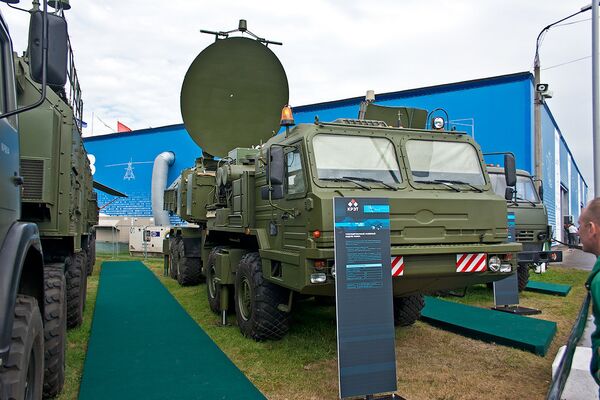
The Krasukha-4's range allows it to effectively disrupt low Earth orbit satellites and cause permanent damage to targeted radio-electronic devices. Ground-based radars are also a viable target for the Krasukha-4 system.
In the future, the Krasukha-4 is expected to tackle targets at extremely high altitudes, including in outer space.
The system will be capable of jamming spy satellites and creating a "dead area" around itself, making it impossible for an enemy to track this zone.
#Russia has the BEST #ElectronicWarfare anywhere. #Tech like #Krasukha-4, #Avtobaza & #Khibiny — VERY #disruptive!👽 https://t.co/duffRu4hN3
— Rebel Eyes (@RebelEyes1776) 14 апреля 2017 г.
Speaking to Sputnik, Russian military expert Viktor Murakhovsky described Russia developing the electronic warfare systems as its "asymmetric response" to the United States' drive to modernize its weapons. He was echoed by Kots who touted the Russian electronic warfare systems as "second to none".
"Since the Cold War, the US has focused on achieving and maintaining technological superiority, primarily in its [aerial and naval weaponry]. We cannot directly compete with them in this regard because they have much more money and opportunities to supply troops annually with modern aircraft, drones and ships. That's why we take asymmetric measures, Murakhovskty said.
Russian MOD to acquire unspecified number of additional Krasukha-2O and Moskva-1 EW systems in GOZ 2018. https://t.co/wIi8oW4aZw. pic.twitter.com/0cu3P8DeJe
— russiandefpolicy (@russiandefpolic) 30 августа 2017 г.
"For example, no country except Russia possesses thee automated electronic warfare control systems. Participation of the person is minimal: the operator only needs to choose one of several computerized options of action against a specific goal. This greatly reduces the system's time of response to a particular threat," he added.
On December 4, 2011, an American Lockheed Martin RQ-170 Sentinel unmanned aerial vehicle (UAV) was captured by Iranian forces near the city of Kashmar in northeastern Iran.
In April 2014, the state-of-the-art destroyer USS Donald Cook was flown over in the Black Sea by a Russian Su-24 fighter jet which reportedly carried neither bombs nor missiles but only an electronic warfare system which experts said had jammed the warship's on-board radar.
After the fly-over, the destroyer which had approached Russia's territorial waters suddenly changed its course and set sail for a Romanian port.

